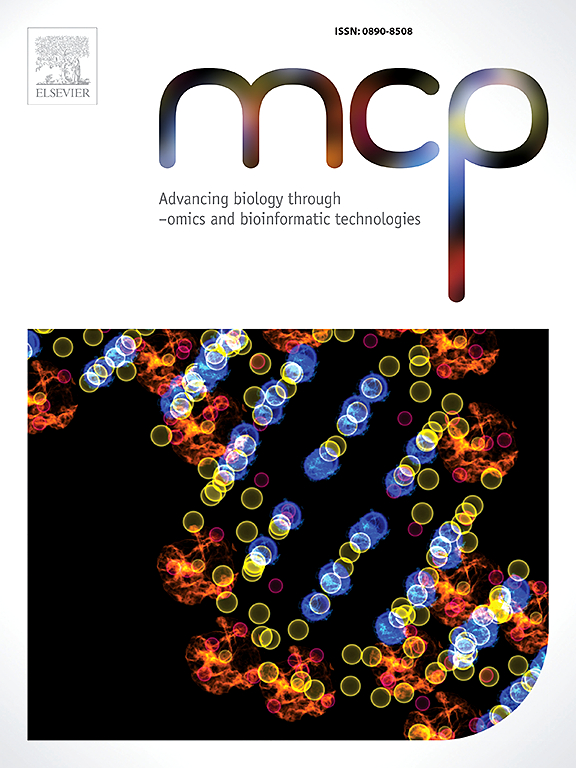Single-cell sequencing revealed the recurrence causes of ETV6:RUNX1 fusion-positive B-ALL in children
IF 3
3区 生物学
Q3 BIOCHEMICAL RESEARCH METHODS
引用次数: 0
Abstract
Objective
The ETV6RUNX1 fusion is the most common genetic abnormality in childhood B-cell acute lymphoblastic leukemia (B-ALL), yet nearly 50 % of relapses occur in patients initially classified as low-risk with this alteration. This study aimed to unravel the underlying pathways driving relapse in ETV6RUNX1 positive B-ALL.
Methods
Single-cell RNA sequencing (scRNA-seq) was performed on a cohort of four B-ALL patients with the ETV6RUNX1 fusion (three newly diagnosed and one relapsed case, selected from 25 patients).
Results
we discovered that relapsed samples exhibited a decline in T cell populations, an increase in CD8 Tex cells and B cells, and a higher proportion of malignant cells. Gene enrichment analysis demonstrated that IFN-γ response signaling pathways and inflammatory responses were significantly enriched in newly diagnosed samples. Conversely, the relapsed samples showed enrichment in the oxidative phosphorylation and glycolysis pathways. Additionally, analysis of cellular interactions revealed that malignant B cells could interact with T cells through LGALS9-HAVCR2, potentially leading to the exhaustion of effector T cells. Moreover, NPDC1, LEF1, and ERG exhibited higher activity levels in malignant B cells from relapsed patients, highlighting their roles in the progression and maintenance of leukemia.
Conclusion
In summary, our study provides valuable insights into the potential causes of relapse in B-ALL patients with ETV6RUNX1, providing a foundation for the identification of prospective therapeutic targets.

单细胞测序揭示了儿童ETV6:RUNX1融合阳性B-ALL复发的原因
目的:ETV6RUNX1基因融合是儿童b细胞急性淋巴细胞白血病(B-ALL)中最常见的遗传异常,但近50%的复发发生在最初被分类为低风险的患者中。本研究旨在揭示驱动ETV6RUNX1阳性B-ALL复发的潜在途径。方法对4例伴有ETV6RUNX1融合的B-ALL患者进行单细胞RNA测序(scRNA-seq),其中3例为新诊断,1例为复发病例,共25例。结果我们发现,复发样本中T细胞数量下降,CD8 Tex细胞和B细胞数量增加,恶性细胞比例更高。基因富集分析表明,IFN-γ反应信号通路和炎症反应在新诊断样本中显著富集。相反,复发样品在氧化磷酸化和糖酵解途径中显示富集。此外,细胞相互作用分析显示,恶性B细胞可以通过LGALS9-HAVCR2与T细胞相互作用,可能导致效应T细胞衰竭。此外,NPDC1、LEF1和ERG在复发患者的恶性B细胞中表现出更高的活性水平,突出了它们在白血病进展和维持中的作用。综上所述,本研究为了解B-ALL患者ETV6RUNX1复发的潜在原因提供了有价值的见解,为确定前瞻性治疗靶点提供了基础。
本文章由计算机程序翻译,如有差异,请以英文原文为准。
求助全文
约1分钟内获得全文
求助全文
来源期刊

Molecular and Cellular Probes
生物-生化研究方法
CiteScore
6.80
自引率
0.00%
发文量
52
审稿时长
16 days
期刊介绍:
MCP - Advancing biology through–omics and bioinformatic technologies wants to capture outcomes from the current revolution in molecular technologies and sciences. The journal has broadened its scope and embraces any high quality research papers, reviews and opinions in areas including, but not limited to, molecular biology, cell biology, biochemistry, immunology, physiology, epidemiology, ecology, virology, microbiology, parasitology, genetics, evolutionary biology, genomics (including metagenomics), bioinformatics, proteomics, metabolomics, glycomics, and lipidomics. Submissions with a technology-driven focus on understanding normal biological or disease processes as well as conceptual advances and paradigm shifts are particularly encouraged. The Editors welcome fundamental or applied research areas; pre-submission enquiries about advanced draft manuscripts are welcomed. Top quality research and manuscripts will be fast-tracked.
 求助内容:
求助内容: 应助结果提醒方式:
应助结果提醒方式:


